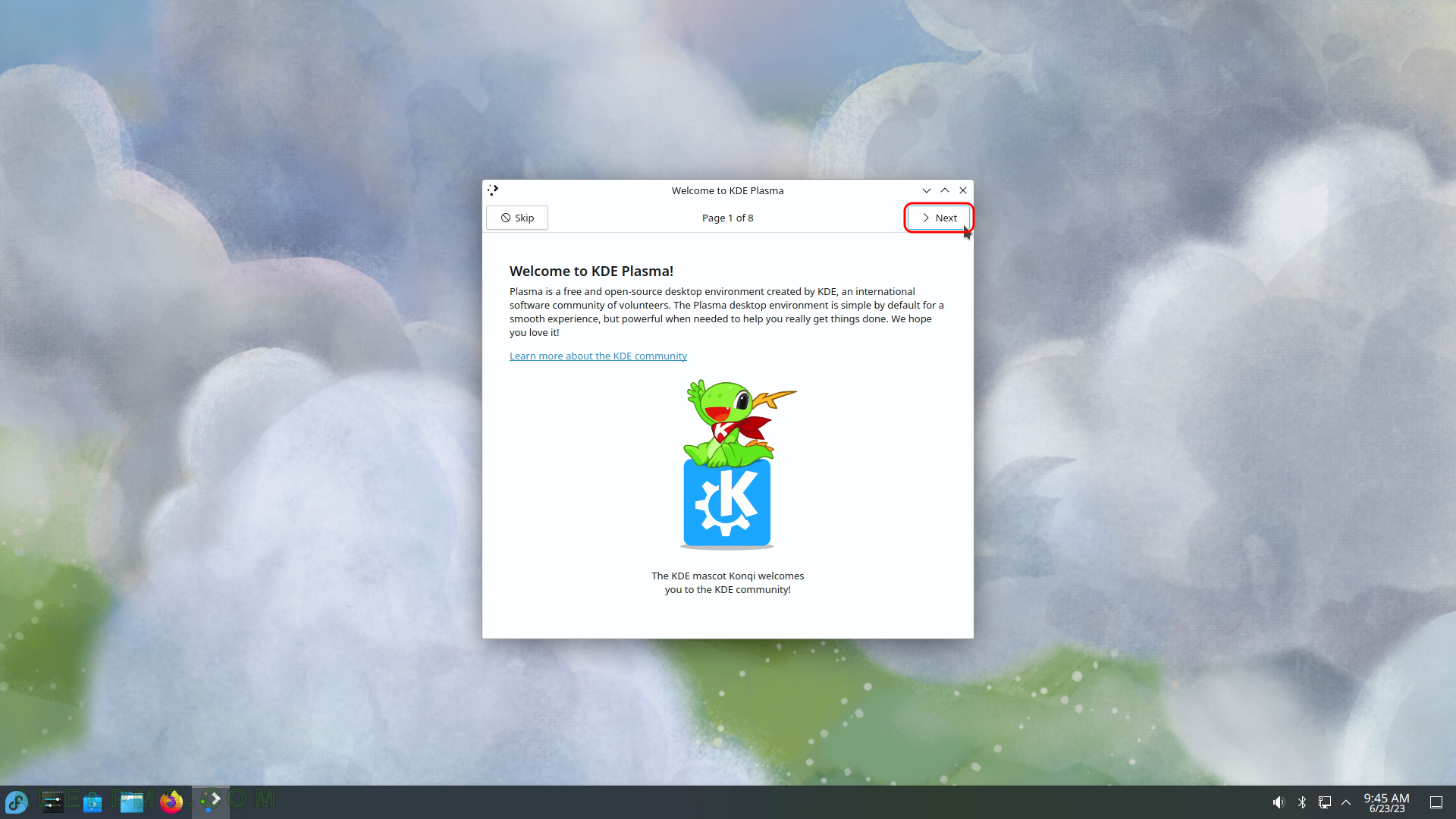SCREENSHOT 21) After the “Begin Installation”, the new disk layout is created and the old data/partitions are deleted.
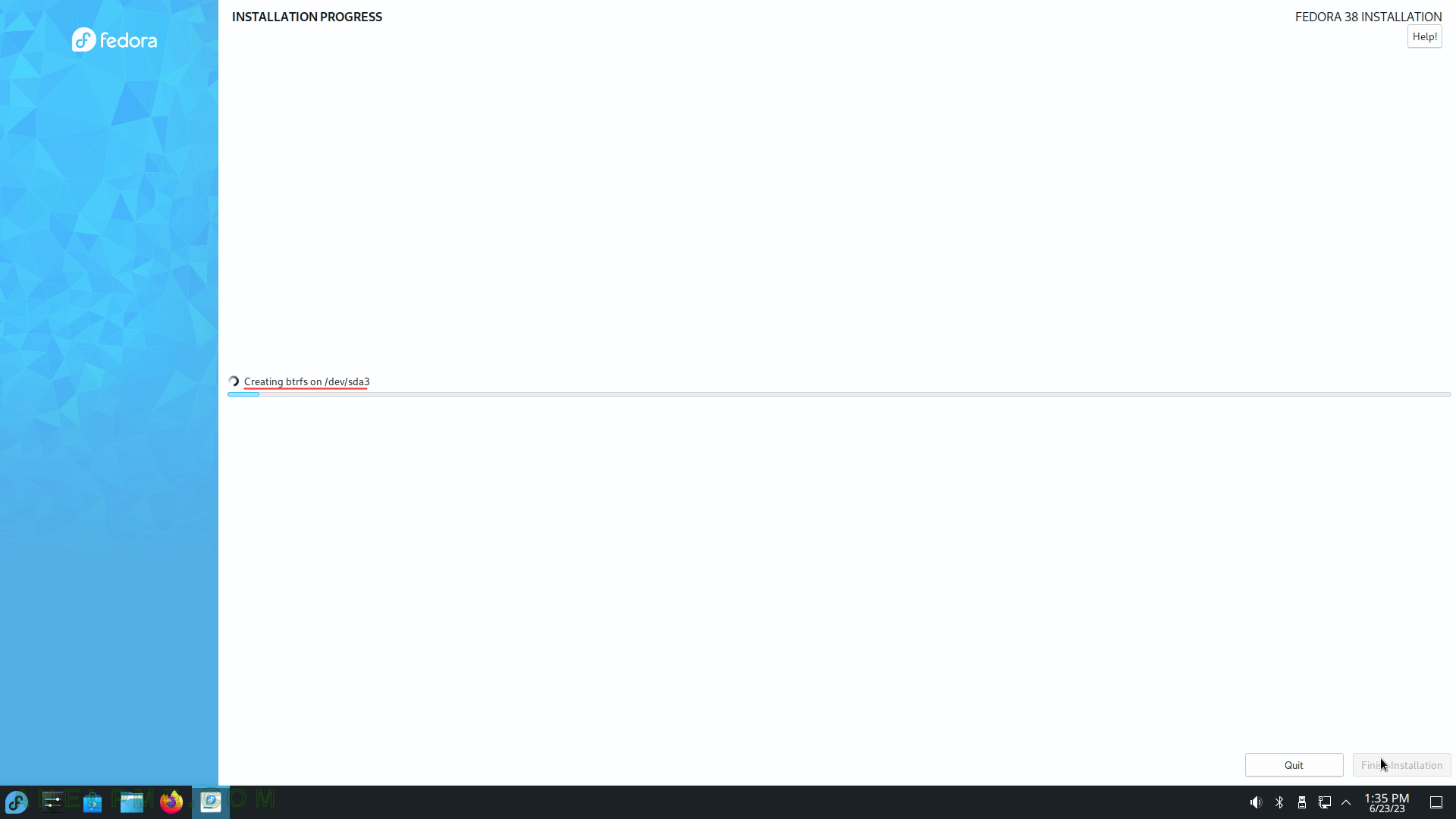
SCREENSHOT 22) The setup is still working…
Installation progress is at 73%.
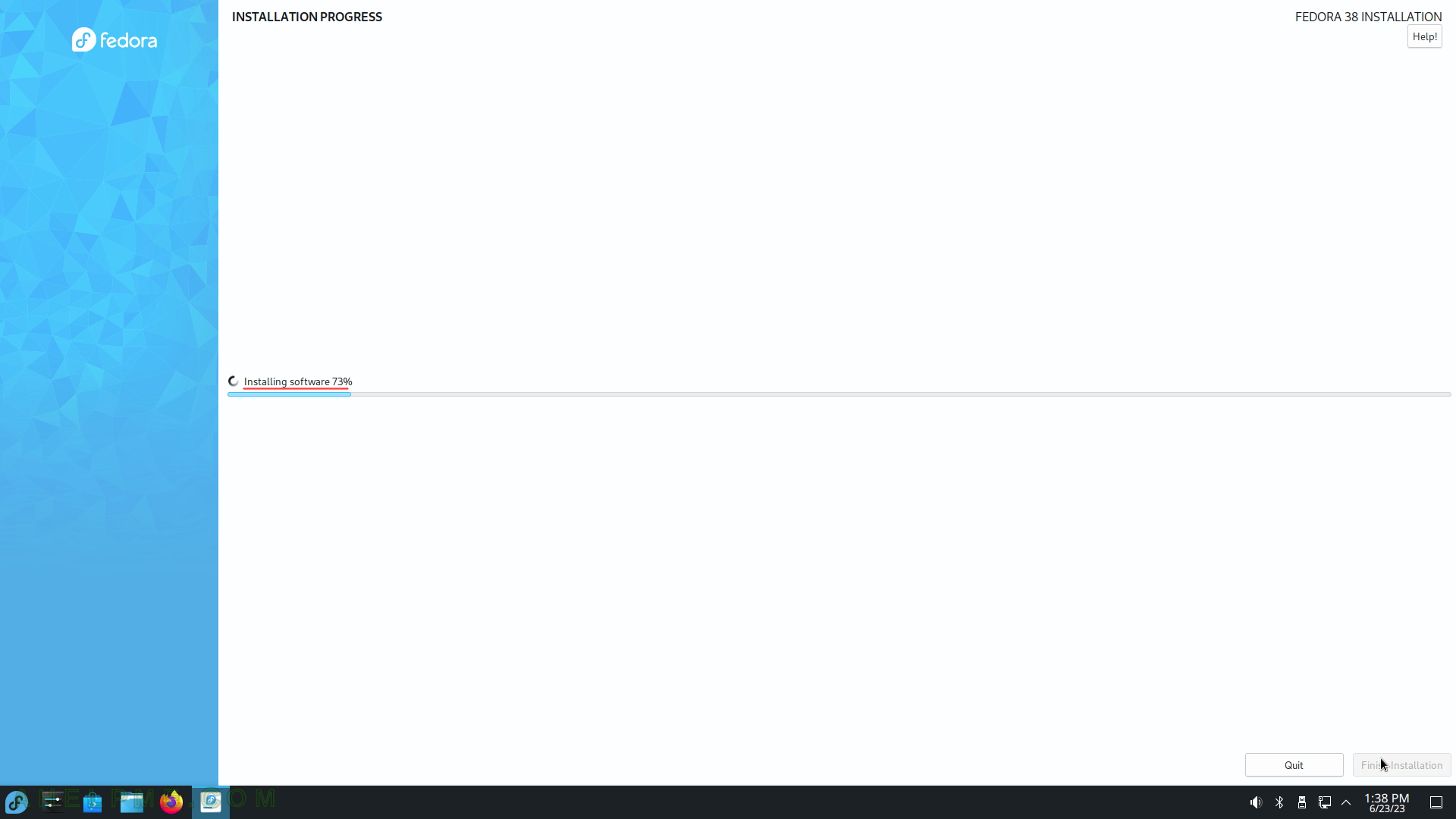
SCREENSHOT 23) One of the last steps is to install the system bootloader.
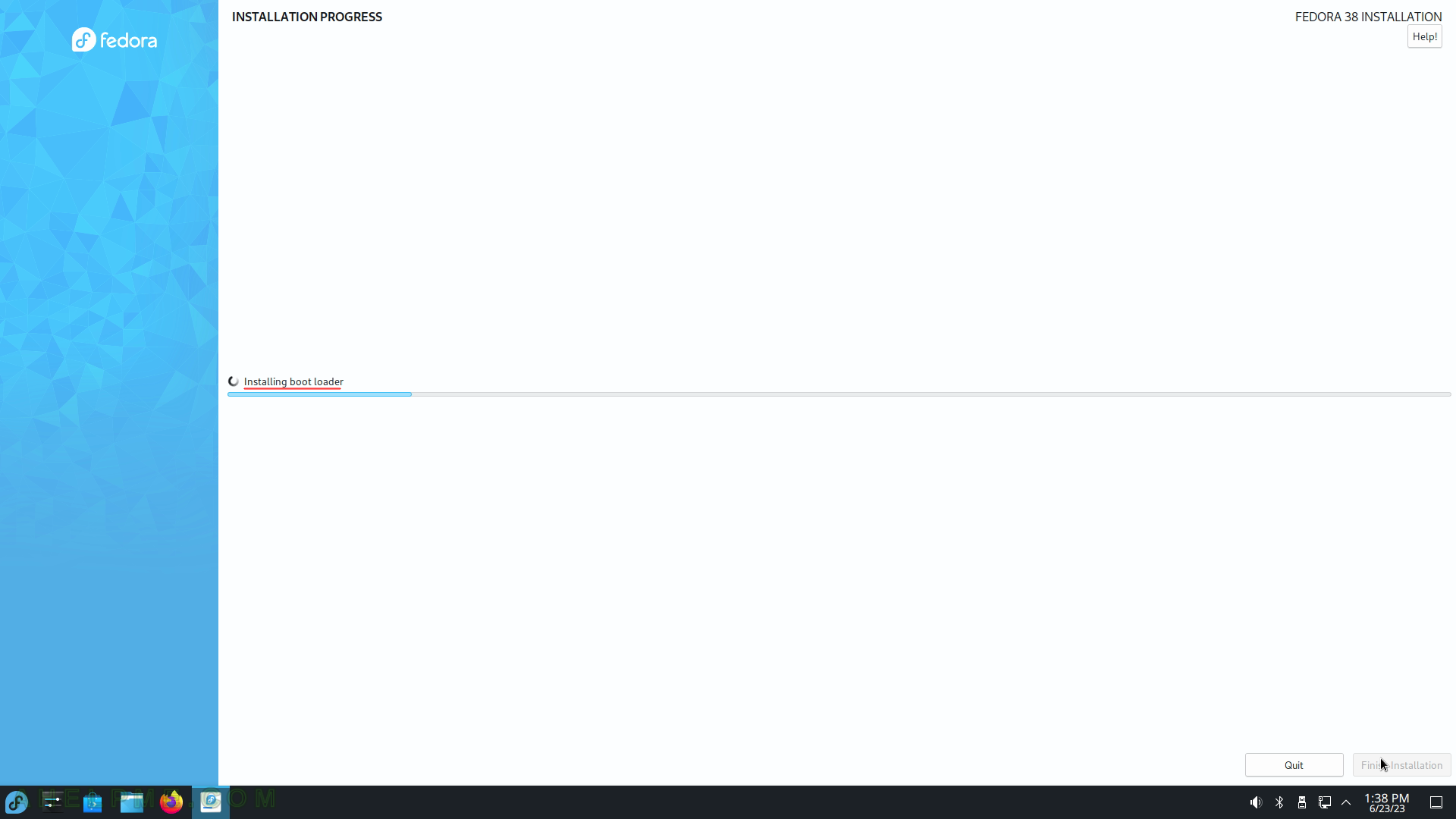
SCREENSHOT 24) The installation has finished.
Quit the installation program.
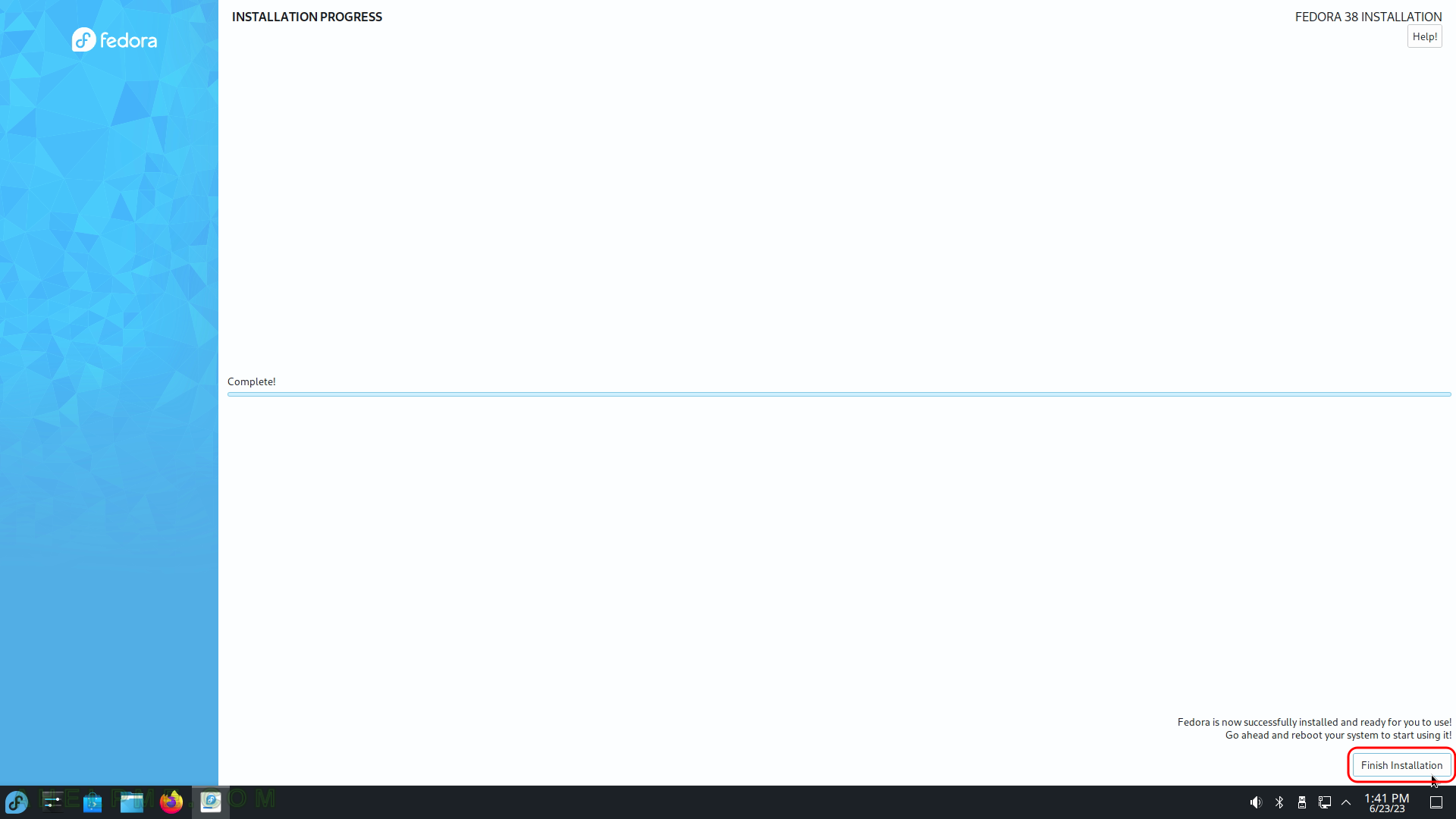
SCREENSHOT 25) The user is still in the Live image, so click on the bottom left corner and then click on “Restart” as shown.

SCREENSHOT 26) A request to the user is issued to confirm the restart of the computer.
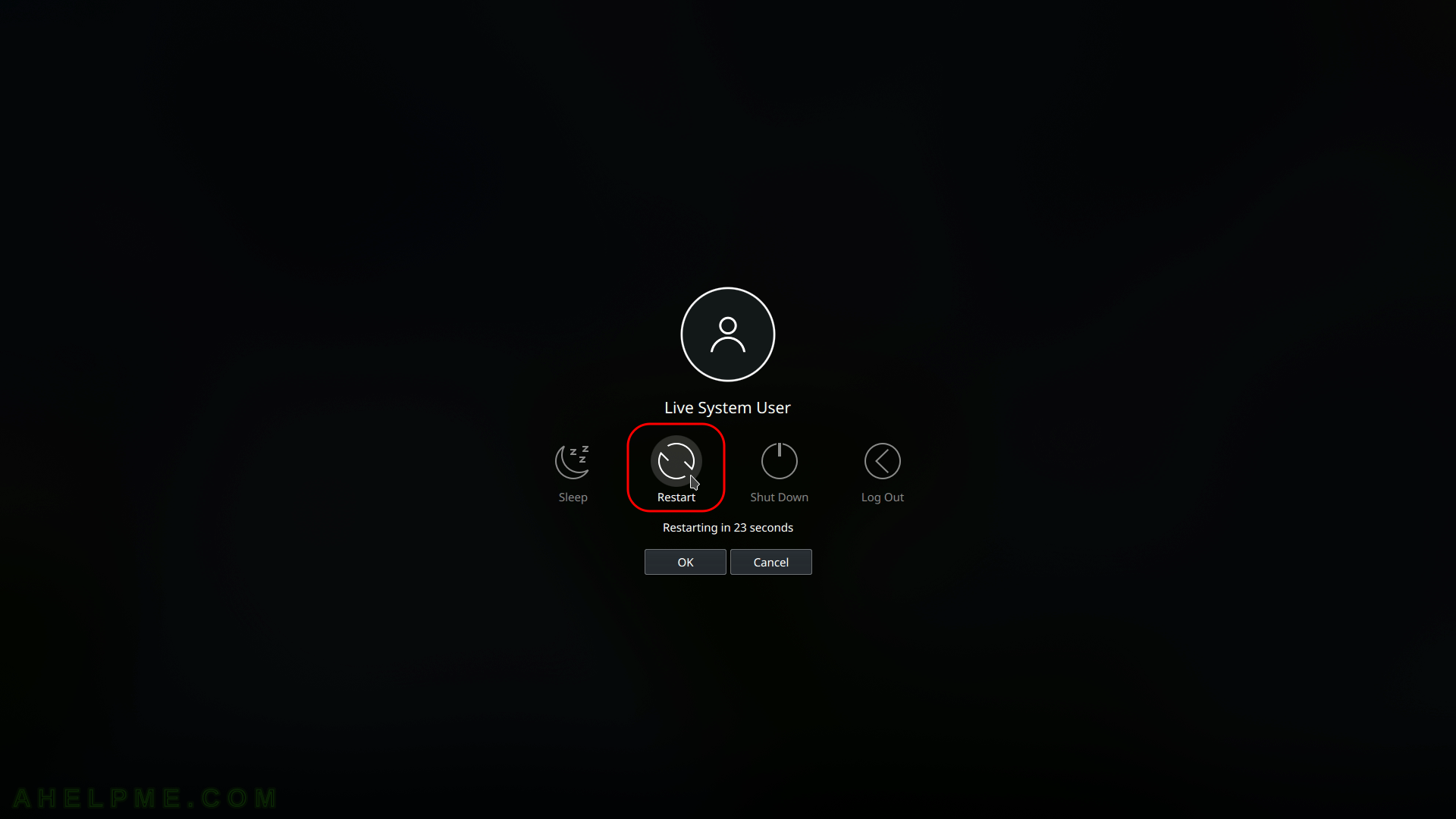
SCREENSHOT 27) Freshly installed Fedora 38 KDE Plasma is the default boot option in the booting program (grub2).
There are more options if more OSes are preset in the computer. The setup found these options and added them to the boot menu. The kernel version is shown – 6.2.9-300.
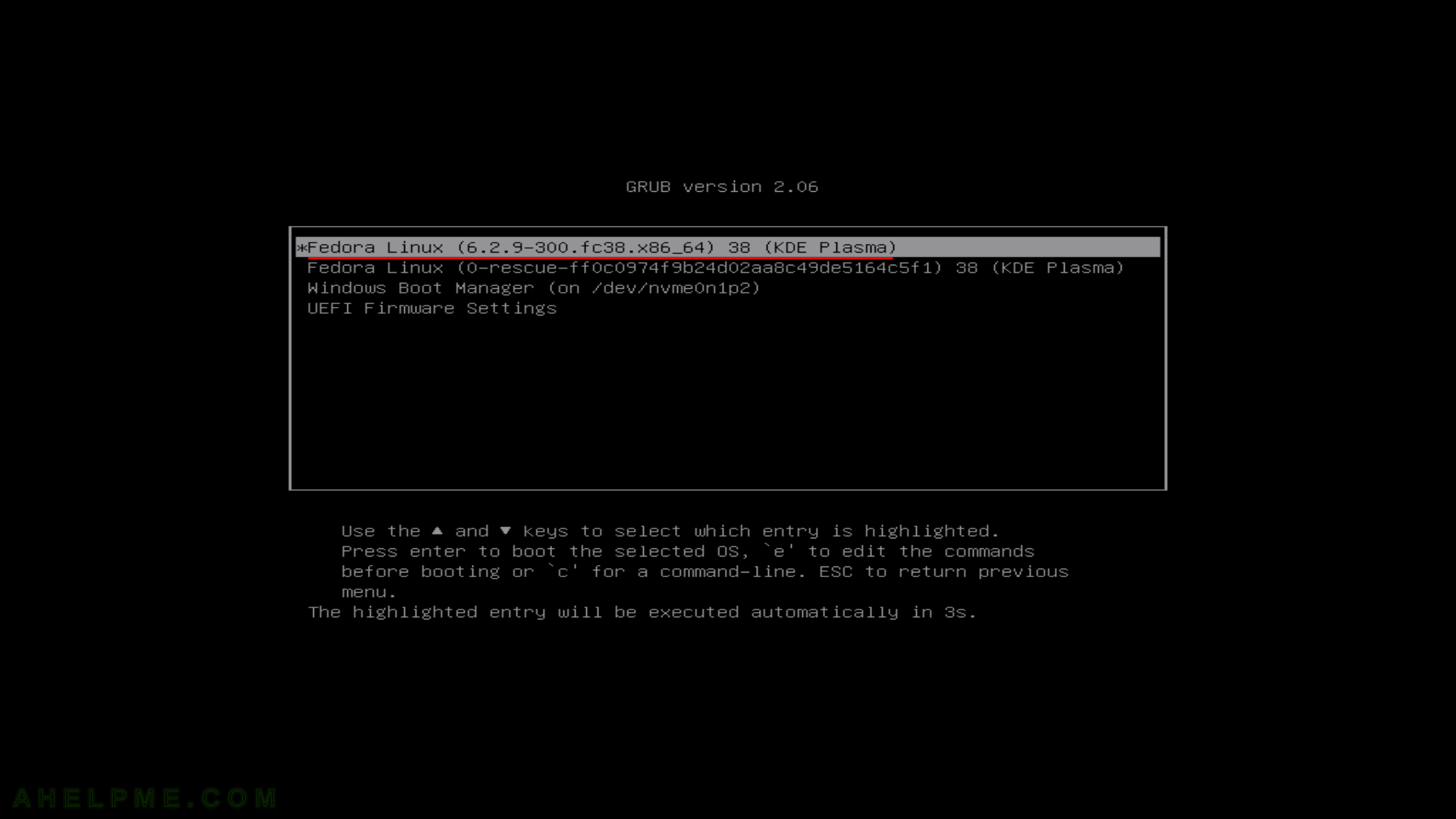
SCREENSHOT 28) Select your user and log in with the right password.

SCREENSHOT 29) The KDE Plasma Deskop is loading.
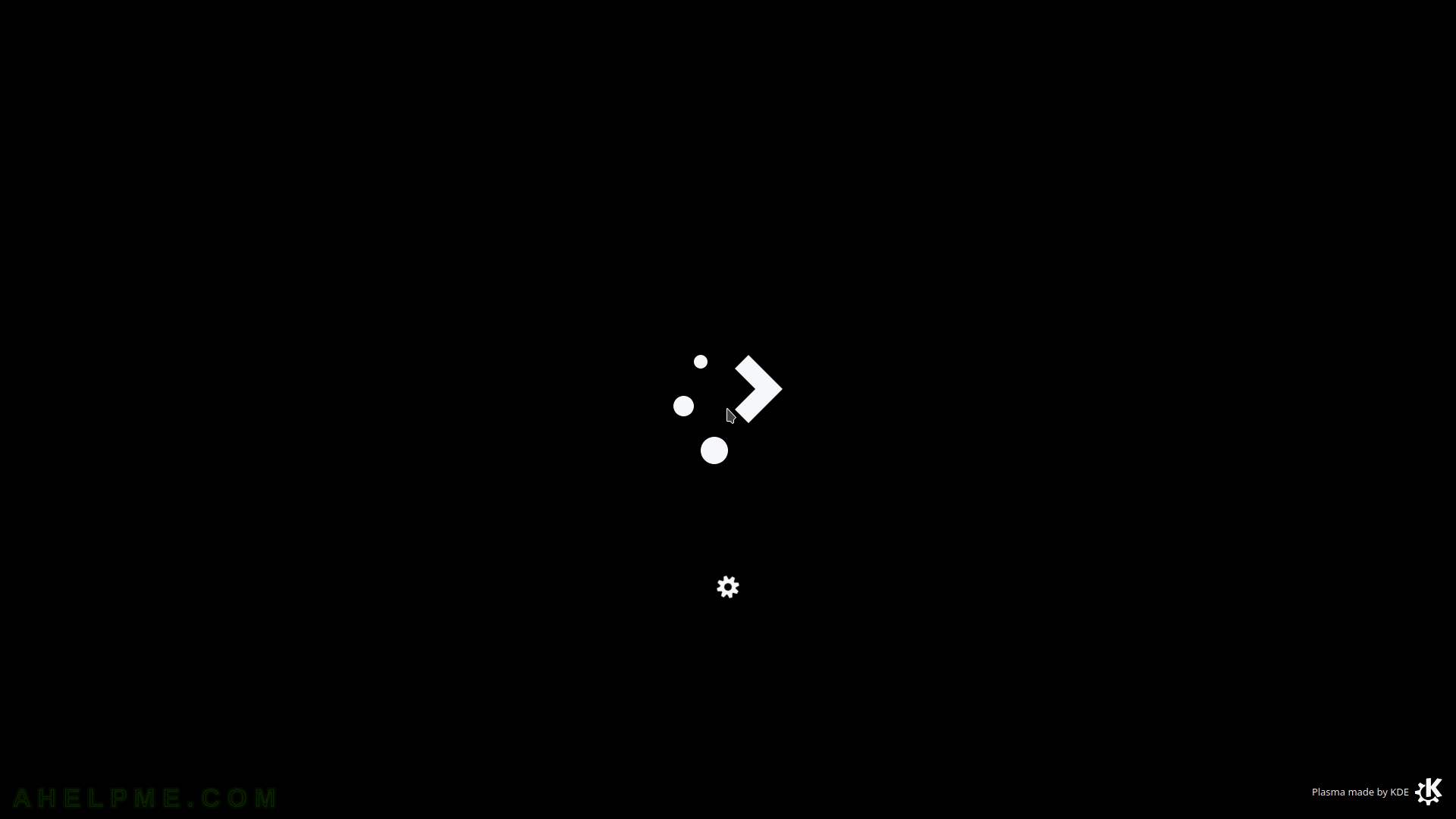
SCREENSHOT 30) Welcome to KDE Plasma
There are 8 welcome screens to get to know about KDE Plasma features. Plasma is a free and open-source desktop environment created by KDE.
